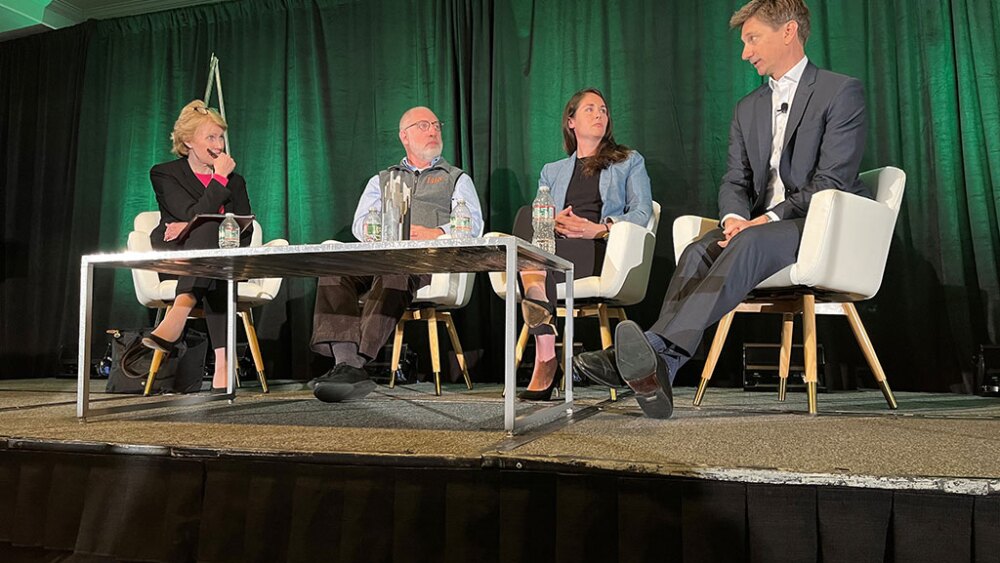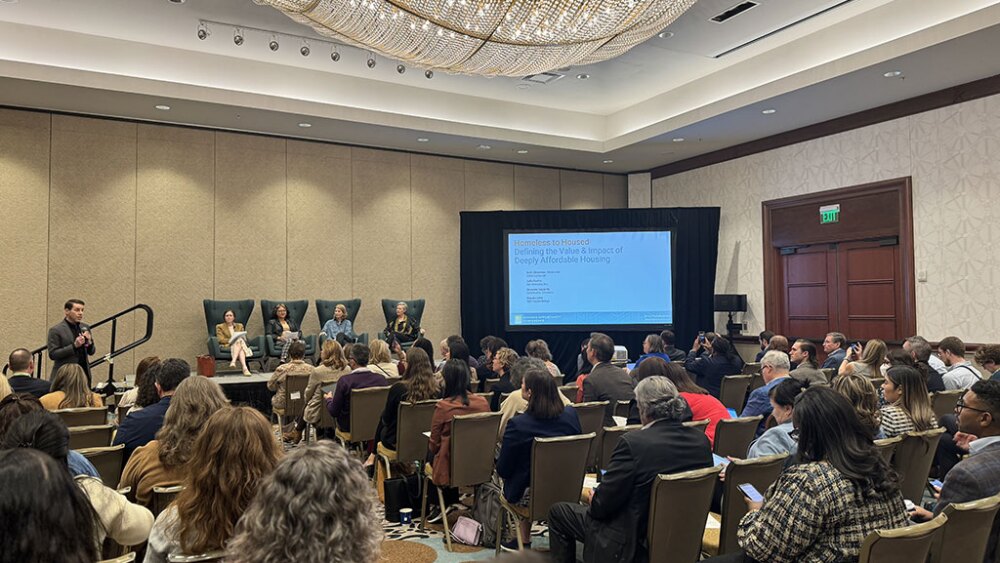We must create more housing for homeless neighbors through public-private-philanthropic-provider partnerships, now.
This was the resounding conclusion from two Homeless to Housed (H2H)-hosted programs during Urban Land Institute (ULI) 2024 meetings. Furthermore, former Secretary of State Hilary Rodham Clinton echoed this call to action in her ULI Spring Meeting plenary presentation during which she advocated for New York City to create more affordable housing immediately to sustain its vitality as a world-class city for all people.
With such a definitive, collective opinion on how the real estate community can tackle the current housing shortage and connect people to housing, here’s a breakdown of these sessions and some of the how and why details that were shared.
Housing Opportunity Conference: Austin, Texas
During the February 2024 ULI Housing Opportunities Conference in Austin, H2H convened a panel of four real estate development and finance experts to define the value and impact of deeply affordable housing on communities. Panelists explored how developers can think differently about their return on investment when developing housing for people and families experiencing homelessness including how to finance this deeply affordable housing, how to build successful public-private-philanthropic-provider partnerships (P5s) with municipal agencies, service providers, and operators, and how to design housing to achieve long-term success and stability for the residents and building operators. The panel also explored the possibility of achieving positive risk adjusted returns and to acknowledge that managing these types of properties present unique challenges. While groundbreakings and ribbon cuttings may be straightforward, successful ongoing management of properties that support residents re-entering stable housing requires skilled operators.
Panel moderator Beth Silverman (Lotus Campaign) led panelists Claudia Lima (SDS Capital Group) Rosanne Haggerty, (Community Solutions), and Sally Gaskin (SGI Ventures, Inc.) in this in-depth discussion, during which they shared how their organizations:
- built those key P5 relationships to achieve right fit financing;
- understood their clients’ needs and built to suit those needs and the long-term needs of service providers helping clients in those developments; and
- helped communities identify the challenges and opportunities they face around homelessness and how deeply affordable housing can promote equitable growth across their cities.
Later in the day, H2H hosted a sold-out companion mobile tour to Community First! Village in greater Travis County to help bring attendees to a local community achieving many of the goals that panelists addressed during their presentation.

Moderator Connie Moore (BRE Properties and ULI Life Trustee), facilitated a New York City-focused conversation with Muzzy Rosenblatt (Bowery Residents’ Committee-BRC) , Erin Burns-Maine (Community Preservation Corporation-CPC), and author Gregg Colburn at the 2024 ULI Spring Meeting in New York City.
ULI Spring Meeting: New York, New York
During the April 2024 ULI Spring Meeting in New York City, H2H hosted its second national symposium during which Gregg Colburn, author of Homelessness is a Housing Problem, presented his research findings about the root causes of homelessness - structural problems that can be fixed with structural solutions. He identified many of the precipitating events that contribute to someone experiencing homelessness and how tight housing markets can further accentuate the problem of gaining access to housing. Public-private philanthropic-provider partnership investments in housing can offer the solutions necessary to stabilize people’s lives and help them to find housing stability in the long-term.
Moderator Connie Moore (BRE Properties and ULI Life Trustee), facilitated a New York City-focused conversation with Muzzy Rosenblatt (Bowery Residents’ Committee-BRC) and Erin Burns-Maine (Community Preservation Corporation-CPC) and identified the regulatory, political, and financial barriers to creating more housing and especially housing that is deeply affordable. Erin shared CPC’s new advocacy efforts to spur affordable housing production after the expiration of the 421-a tax incentive. Muzzy shared BRC’s efforts to not be a capacity system (building greater quantity) without building a care system (building greater quality) when building shelters and now deeply affordable housing. One of the most poignant examples provided was the timed release of people from the criminal justice system. Currently, their option for housing is through the shelter system. This does not provide stability or an adequate level of support to re-enter society.
The panel identified successful partnership examples and tools that have worked and are working. These include:
● the New York City Housing Authority’s family re-entry program where there is a post-release home return for people in the criminal justice system and due to this, rates of recidivism go down; and
● the HUD Veteran Homelessness Program, helping reduce veteran homelessness by 50% due to strategic partnerships with governmental agencies;
They also identified things that could work and are worth encouraging leaders in the field to investigate and build on:
● Making Section 8 vouchers even more flexible and easy to use, like food stamps (NY child welfare system example);
● Empowering government officials to innovate within their program areas;
● Nonprofits collecting and sharing data and working with elected officials;
● Leveraging positions of power and putting out a positive narrative; and
● Rethinking and updating modes of housing production – technologies and processes have not widely changed since World War II.
In addition to this panel, H2H hosted several events, including min-sessions exploring Title V and how to approach housing in space-constrained cities.
“The Homeless to Housed initiative aims to identify real estate-driven solutions that will help end the housing and homelessness crisis in the U.S. By connecting experts in real estate and homelessness; we are identifying practical ways to build more deeply affordable housing with the supportive services needed by people experiencing homelessness while still getting a return on investment. H2H is committed to fostering conversations, forging partnerships, and uplifting examples of success to move the needle on this growing crisis,” reflected ULI H2H senior director William Herbig.





